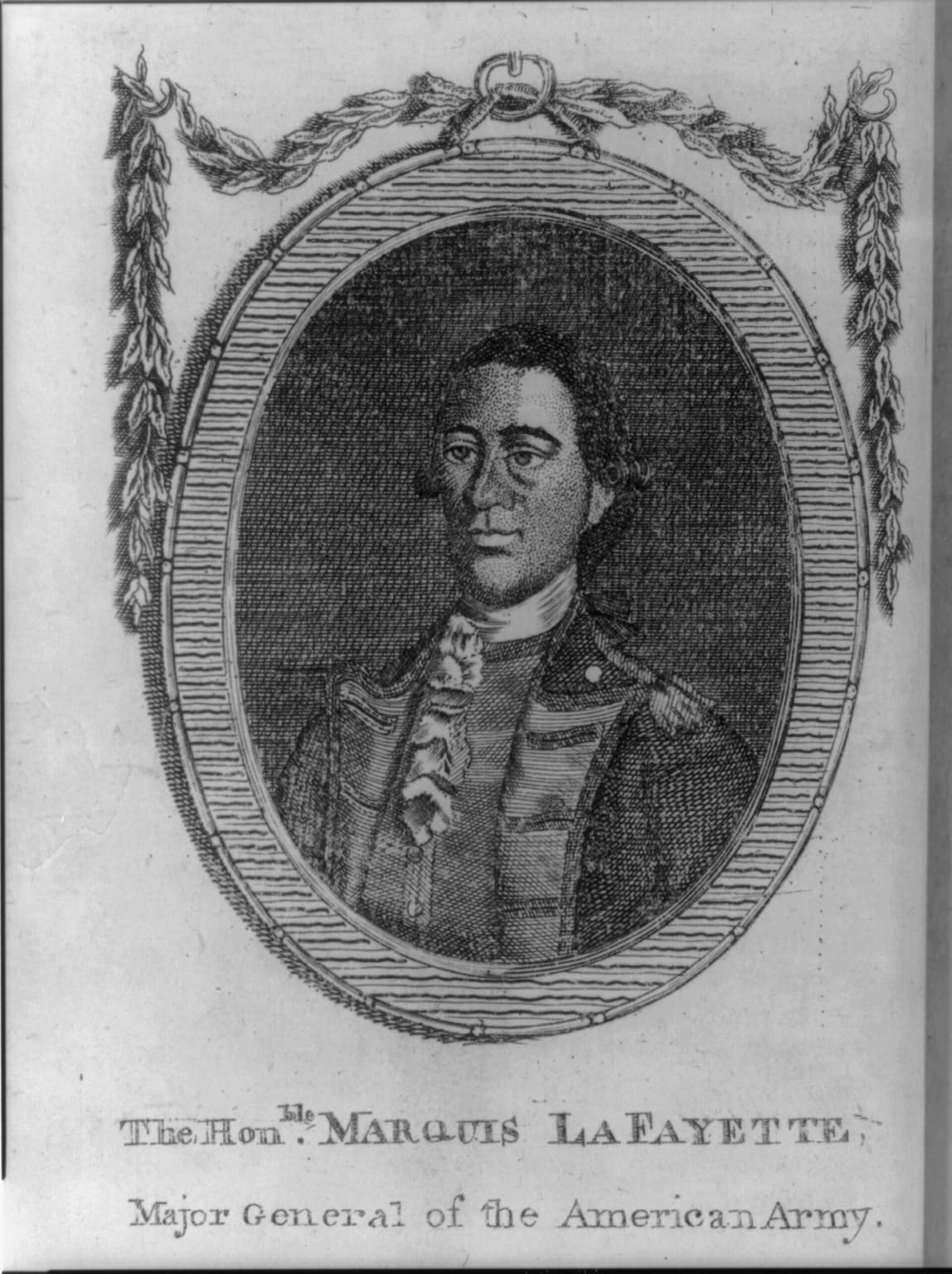With the Summer Olympics, French culture was everywhere in America. NBCU reported an average of 30.6 million viewers across its platforms for the games; an 82 percent increase over the 2022 Tokyo games. It is fitting, then, that as the Paris Games closed, another initiative launched to celebrate Franco-American relations: the Bicentennial of Lafayette’s Farewell Tour.
The tour, which launched August 16, 2024, will run 13 months and trace the route the Marquis de Lafayette took on his Farewell Tour of America in 1824-1825. Lafayette’s tour and the bicentennial celebration both have distinct meaning to the U.S. Army and are illustrative of the larger story of how the Army has influenced French-American relations over the past 250 years. Although this relationship has seen significant highs and lows, not least the Quasi-War between 1798 and 1800, it has been of singular importance to America’s story.
General George Washington and the Marquis de Lafayette at Valley Forge. Source: Library of Congress
Gilbert du Motier, or the Marquis de Lafayette as he is better known, was inspired to join the American Army in 1775 upon hearing about the Revolution’s commitment to the ideal of rule by the people. He was recruited as part of a broader effort to enlist the talents of French officers in the Revolutionary War and arrived in America in 1777 as a Major General in the American Army (the high rank provided primarily due to Lafayette’s personal wealth and connections with French influencers). He quickly became an integral part of General George Washington’s close-knit circle of aides and advisors. (Side note: this circle of aides included Alexander Hamilton, earning Lafayette a place in the hit 2015 musical Hamilton.) Lafayette also served admirably in the field, suffering a wound to the leg at the Battle of Brandywine and playing an important role in the Army’s victory over the British at the Battle of Yorktown in 1781.
Source: Library of Congress
Lafayette’s courage and deep personal commitment to the Revolution earned him hero status among Americans. The New York Times reported in 1930 that there were 150 cities named after Lafayette, including Fayetteville, North Carolina, home to Fort Liberty, one of the largest and most storied Army installations in the country. Fort Liberty is home to both the 82nd Airborne Division and the Army Special Operations Command. In 2002, the U.S. Congress made Lafayette an honorary U.S citizen, an honor bestowed upon only eight individuals.
Lafayette’s post-Revolutionary War career is perhaps best known for his commitment to freedom and equality around the world, causes for which he repeatedly put his life in danger. But he also returned to America for a farewell tour in 1824. Invited by President James Monroe, Lafayette was then the last remaining general from the American Army. Lafayette’s tour was an epic event for America.
For the Army, Lafayette epitomized a bond that long outlasted the man. In July 1917, when American troops first arrived in France to fight in World War I, General Pershing, the commander of the American Expeditionary Forces visited Lafayette’s tomb. It was here that Colonel Charles Stanton said, “Lafayette, we are here!”
Beginning with Lafayette and his comrades in the Revolutionary War and continuing to this day, the Army has played a unique role in shaping American relations with France. The recent commemorations for the 80th anniversary of D-Day drive home the sacred element to this relationship. But it also plays out in much more routine ways. West Point, for example, has long sent cadets to spend a semester studying abroad at the French military academy at Saint-Cyr.
I felt this history when I served alongside a French unit in Afghanistan, as part of a NATO mission. This history will also come to life over the next year as cities across the country observe the 200th anniversary of Lafayette’s tour. Such experiences offer ways for Americans to consider both the unique and important story of the Marquis de Lafayette and the broader story of French-American relations, where one of the main characters has long been the Army.
Additional Resources:
For more in formation on the bicentennial celebration of Lafayette’s Farewell Tour, see here. You can also learn more at the American Friends of Lafayette website.
For more information on the American Expeditionary Forces and Lafayette’s tomb, see this post from Lafayette College.
Be Part of Army 250
If you’d like to write a newsletter post, share an educational resource about the Army, or lift up an opportunity for people to connect with the Army (e.g., an event, story, etc.), please contact Dan (dan@army250.us).






